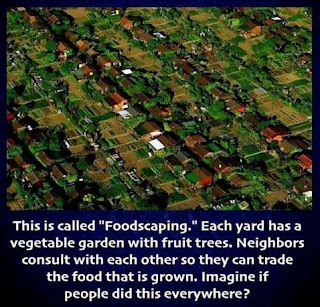The front page today features a story on the dying trees in the Oak grove transplanted for the new Costco. For a combination of reasons this has seemed like a real failure.
 |
| Front page today |
But rather than being an argument for better balance with both/and, for smarter development and better accommodation for mature trees, critics of the Costco and tree loss seem to argue more one-dimensionally against development.
Meisner believes the gridlock and traffic tied to the shopping center will put children, cyclists and pedestrians in the surrounding neighborhoods at risk. Keeping the trees, she said, was a way to keep some semblance of nature in the neighborhood, contrasting the “behemoth of a box store” that is Costco.
But the traffic and danger from the slightly smaller shopping center tree advocates seemed prepared to accept would not have been very much less. The all-or-nothing nature of the argument here is misleading. With the way Kuebler is built out, any auto-oriented shopping center is going to offer dangers for "children, cyclists and pedestrians." It's matters of degree and quantity, not of radical qualititive difference.
Earlier this month on FB there were several posts featuring suburban greenery. It was likely a response to the heatwave, invoking various expressions of planting in architecture, kitchen gardens, and parkland as the prime antidote to warming. Emotionally it is appealing, and greenery literally cools the urban environment.
 |
| Doing this everywhere = more cars |
But most of the building forms in the associated pictures were single detached dwellings set on large lots. The implied transportation is by car, as things are spaced far enough apart that walking is not convenient. Transit will not be efficient or frequent in those visions.
 |
| On heat islands, autoist development, and trees in Willamette Week |
As we think about our housing crisis, about our climate crisis, and about development and trees, we need to make sure that the pictorialism of lush greenery and any romanticised notions of urban ecology don't erase our analysis of transportation and greenhouse gas pollution. (See also "We need to Center Autoism in Tree Canopy Conversation and Analysis.")
Better tree protection is great, but if it requires maintaining our autoist urban spacing and reliance on cars, we will take back what we thought to give.
 |
| Proposed amendments - via FB |
Apparently there are some proposed amendments to our tree codes in the works. On the surface they look great, but if the proposed amendments and tree conservation plans actually inhibit new housing, they might have a crypto-NIMBY function, and they deserve careful scrutiny to ensure they strike the right balance of promoting tree canopy while also not curbing new housing for people.


2 comments:
While I sympathize with Ms. Meitner, I thought that she had it wrong when she compared the Costco development site with Manhattan. Suburban sprawl commercial development at the edge of town is nothing like Manhattan. In fact, Salem could benefit from some Manhattan style development. Not the skyscrapers but the more fine-grained urban neighborhood development that Costco could never fit in.
The proposal to increase tree preservation requirements to 50% for new housing developments is not viable for the reasons you mentioned. My sense is that it was meant to start a conversation about whether to increase the standard from the current 25% to something higher. More importantly, the code revision propose to protect trees that have a 40" or greater diameter. Whether 40" is the right number (Oregon white oaks are protected at 24") has yet to be determined, but what is clear is that protecting mature trees is an important contribution to our urban tree canopy and the many associated benefits. In addition, the revisions include a better definition of a tree's critical root zone and much clearer and stronger protections for trees marked for preservation during construction. Urban greenery, density, and "livability' are not mutually exclusive, but threading that needle requires good design and good design depends on thoughtful codes and regulations.
Post a Comment